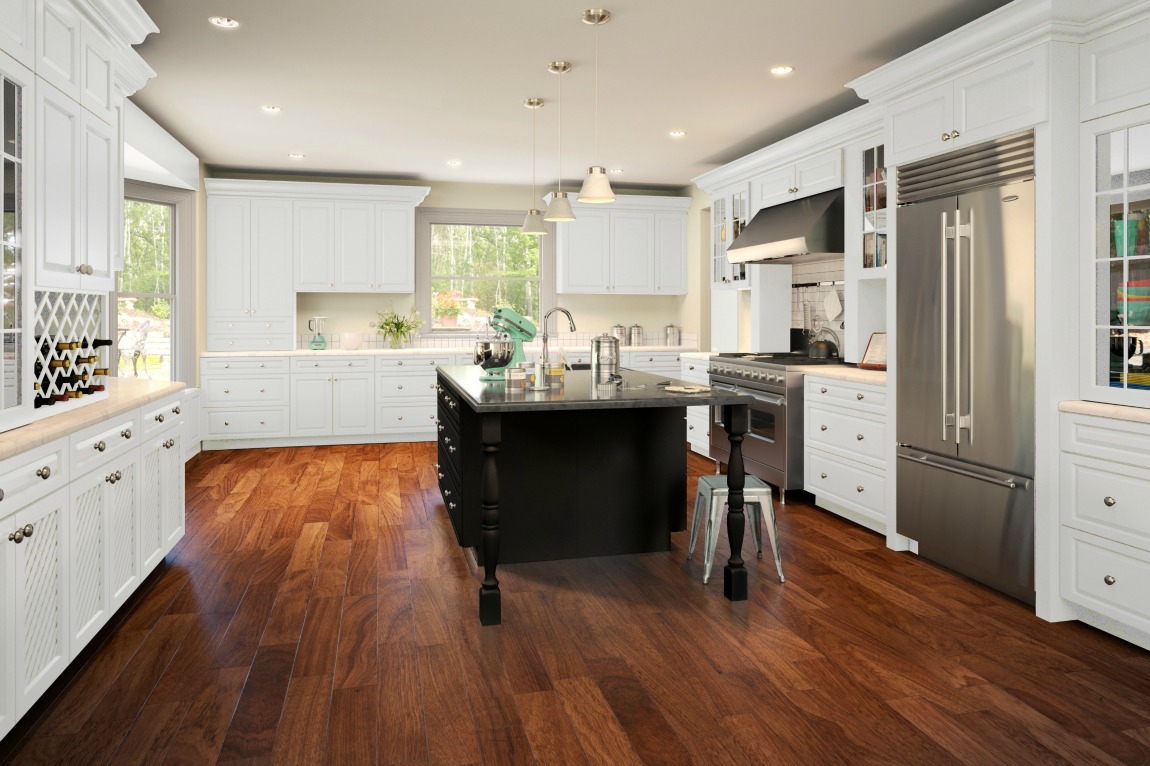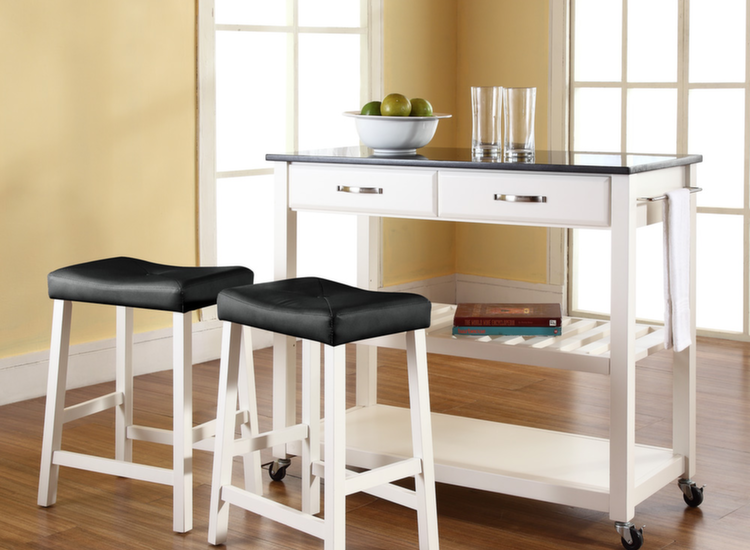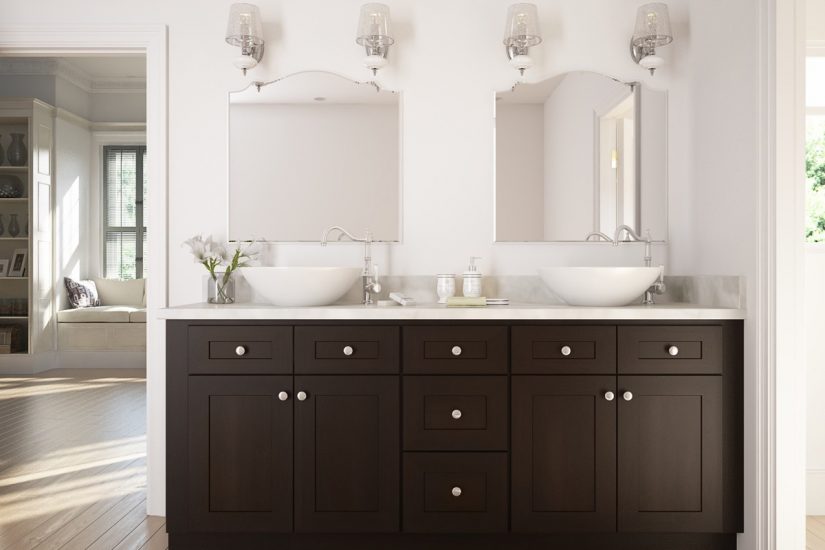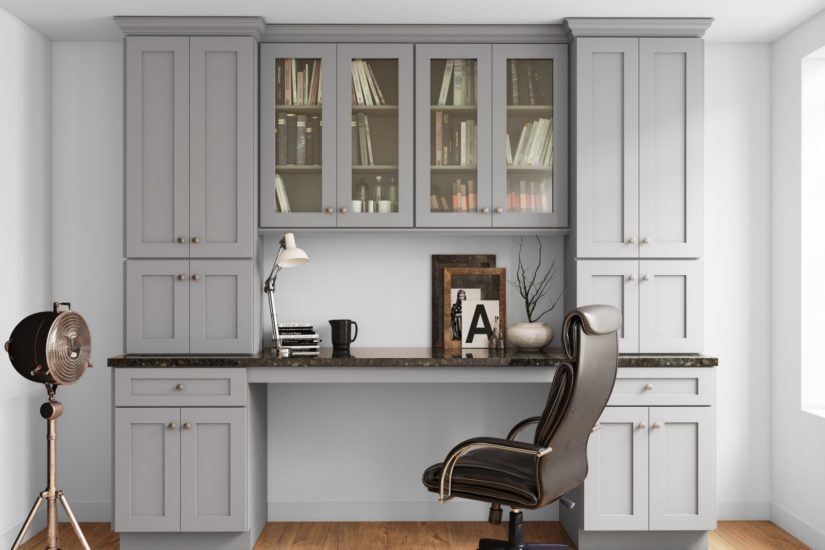If you’re looking to update your kitchen or do a little remodel to make it current, you’ve probably heard all about the open concept kitchen. This popular kitchen design opens up multiple rooms into a single living space—typically the living room, dining room and kitchen combination. This open concept kitchen design works well for people who love to entertain, as well as those who have bigger families or simply want to make the most of a smaller space.
Yet, even though it’s popular, the open concept kitchen is not ideal for every person nor every space. Here’s a quick look at the pros and cons of an open concept kitchen that you should consider prior to knocking down that first wall.

Pros of an Open Concept Kitchen
Fewer walls creates a feeling of spaciousness which can make a smaller space feel and appear bigger. Other benefits include:
• Makes entertaining comfortable. When entertaining guests involves preparing a meal, that means spending a lot of time in the kitchen. This leads your guests to join you in the kitchen to visit. The problem? You’re working. The open concept kitchen makes it possible for your guests to stay in the dining room or living room and still visit as you prepare the meal.
• Gives parents piece of mind. With an open concept kitchen, a parent can keep an eye on young kids while they play in the living area, for example, while still preparing a meal. This works well for hosting, too, as adults can visit and still have the kids in sight.
• Improves use of all your space. Some rooms, like a formal dining room, may not get used as much. The open concept transitions this room into usable space, making the entire space larger and maximizing the use of all your square footage.
• Better sight-lines, views and natural lighting. Without walls, you’ll see more. You can look out that large picture window in the living room from the kitchen, for example. You’ll also enhance the feeling of the space with more natural light.

Cons of an Open Kitchen Concept
As we noted, the open kitchen concept is not ideal for all spaces and people. Introducing an open concept into an already large space can make it feel boxy and too big. Other drawbacks to the open kitchen concept people have found include:
• The mess. Cooking creates a mess. Except for the few who have mastered the clean-as-you-go approach, this means when you sit down to your meal, there’s an ugly stack of dirty dishes within view. Scullery kitchens—small prep kitchens walled off from the main kitchen—are one way to address this. You have a functional but small kitchen space where you can do your work, but all the dishes and appliances are in the main kitchen – behind a wall.
For those with kids, toys in the room may be a concern, too. Furniture with built-in storage is one way to overcome this challenge. Building in larger closets as you design your open space kitchen could be another.
• The noise. Smaller rooms allow for different types of flooring, like carpeting in living rooms, which dampen sound. Walls also reduce the amount of sound produced in a room. A large room allows sound to travel more, plus the need for continuity in design makes solid tile or wood a common flooring across all rooms, further increasing solid surfaces for sound to bounce off of. It might mean you’ll hear the dishwasher while you’re visiting with guests or trying to watch your favorite show.
Throw rugs are one way to resolve this. Window drapes are another. There are many ways to address this challenge—just let your imagination run wild!
• Less storage. Fewer walls means fewer places for cabinets. Islands or peninsulas are one way to increase cabinet space in an open-concept floor plan. Alternatively, you could add a walk-in pantry space to make up for the loss of cabinets.
• Lack of privacy. Some people like to cook in silence or without distraction. If your kids typically do their homework at the dining room table, will their focus by affected by someone watching TV in the living area a few feet away? If you or your family values private spaces, this may be a factor to seriously consider.
• Sacrificing smaller rooms. If you’re maximizing a small space, it usually means removing small rooms that might have been used for other purposes, like an office or hobby space. If having a separate space is important or essential, to keep tools or gear like a sewing machine, for example, you will want to consider this with your design of the space. It may mean moving an office to an upstairs bedroom or to the garage, for instance.
• Fewer walls. Do you have décor or pictures you like on your walls? Do you have art that needs protection from sunlight? If you have other places to put these treasures, no problem. If not, it’s worth considering how you will address the absence of wall space.
However, none of the “cons” to the open kitchen concept should stop you from pursuing the idea if it’s something that appeals to you. Instead, use these tips to guide your design to make your space truly your own!




